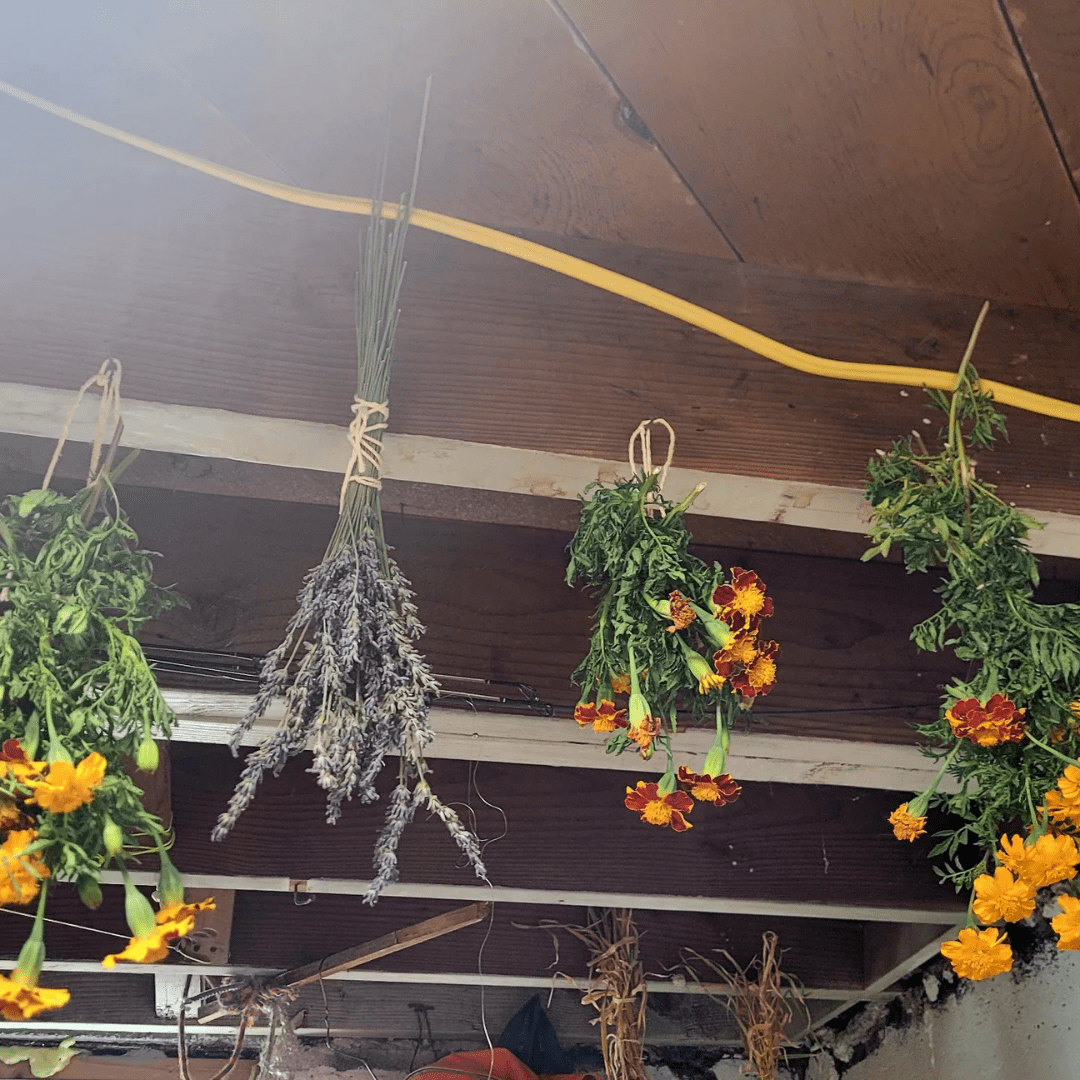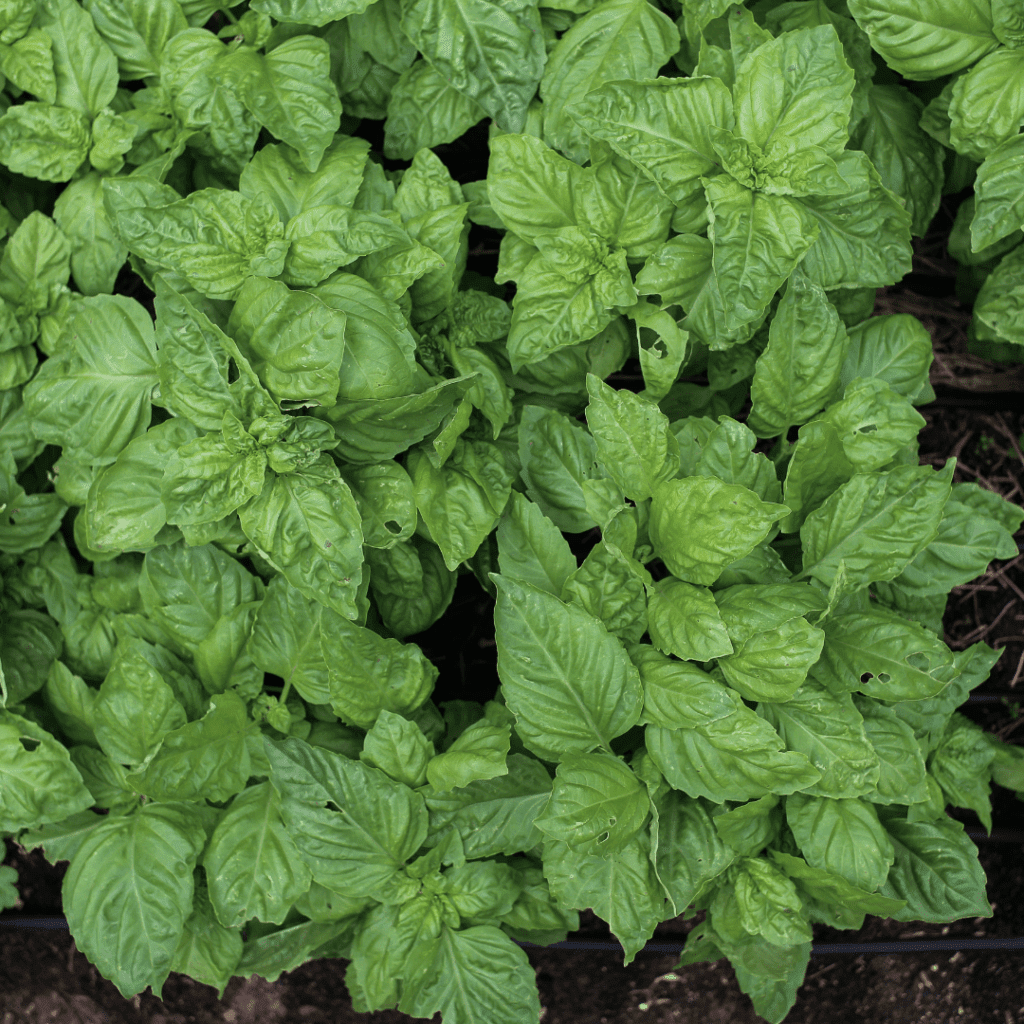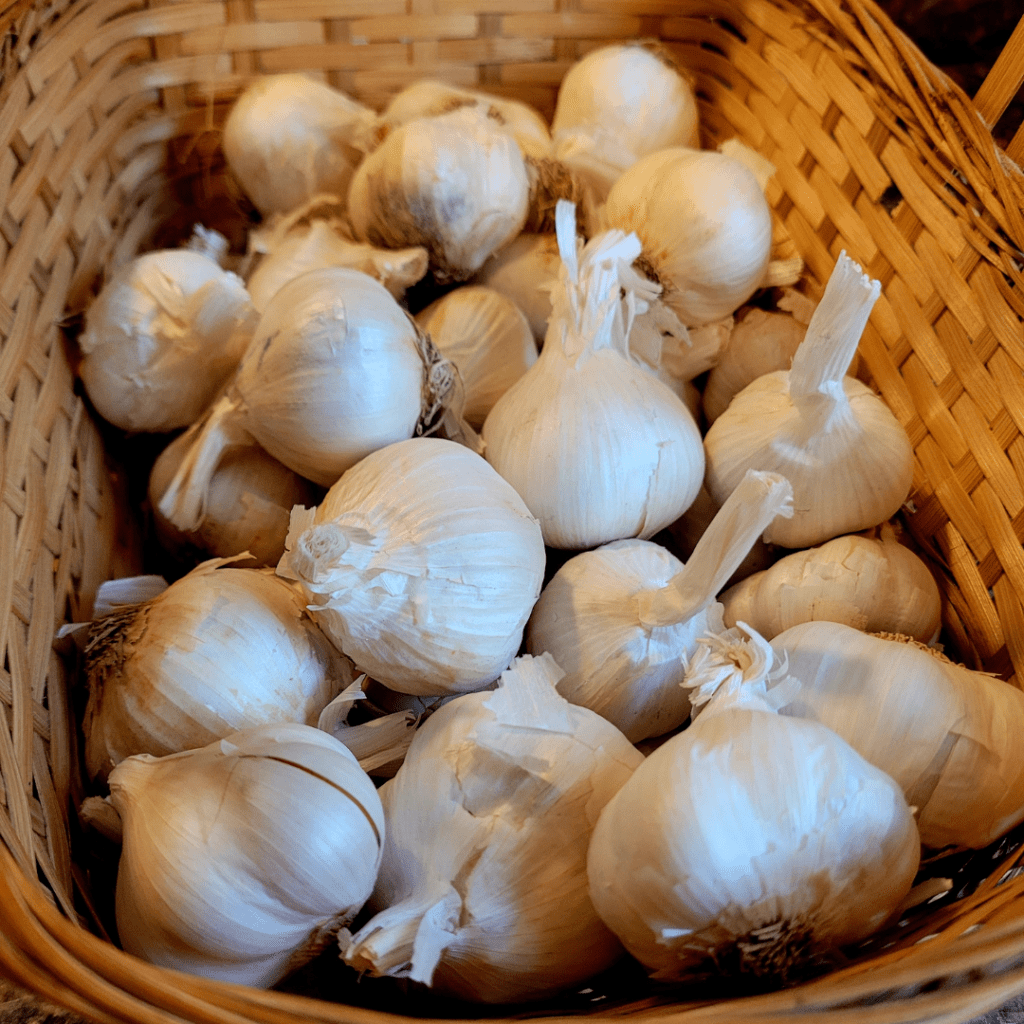Medicinal herbs to grow.
Are you looking to grow your own natural medicine cabinet? Cultivating medicinal herbs in your garden is a rewarding and practical endeavor. Not only do these plants provide potent healing properties, but they also add beauty and fragrance to your outdoor space. Imagine stepping into your backyard and handpicking fresh herbs for homemade remedies, teas, and natural skin care products – it’s a truly empowering experience.
In this comprehensive guide, I’ll explore 16 of the best medicinal herbs you can easily grow right in your own garden. From time-honored favorites like calendula and echinacea to lesser-known gems like elecampane and marshmallow root, I’ll be discussing the unique benefits and growing requirements of each herb. You’ll discover how to harness nature’s medicine cabinet and unlock a world of natural healing and self-sufficiency.
But growing medicinal herbs isn’t just about practicality; it’s also a connection to the ancient traditions of herbalism and a way to embrace a more sustainable lifestyle. As you cultivate these plants, you’ll develop a deeper appreciation for the incredible power of nature’s gifts. So, whether you’re a seasoned gardener or a complete novice, join me on this adventure to grow your own healing garden and reclaim your well-being, one herb at a time!
This is a pinnable post. Tap or hover over any image in this post to pin to your Pinterest Boards.
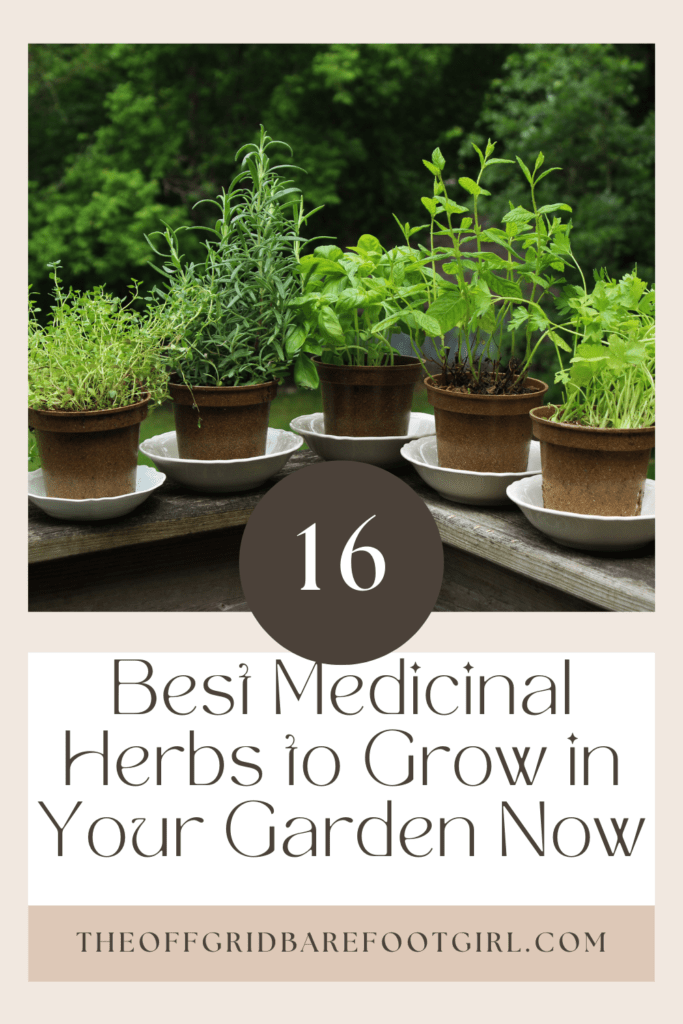
16 Best Medicinal Herbs to Grow in Your Garden:
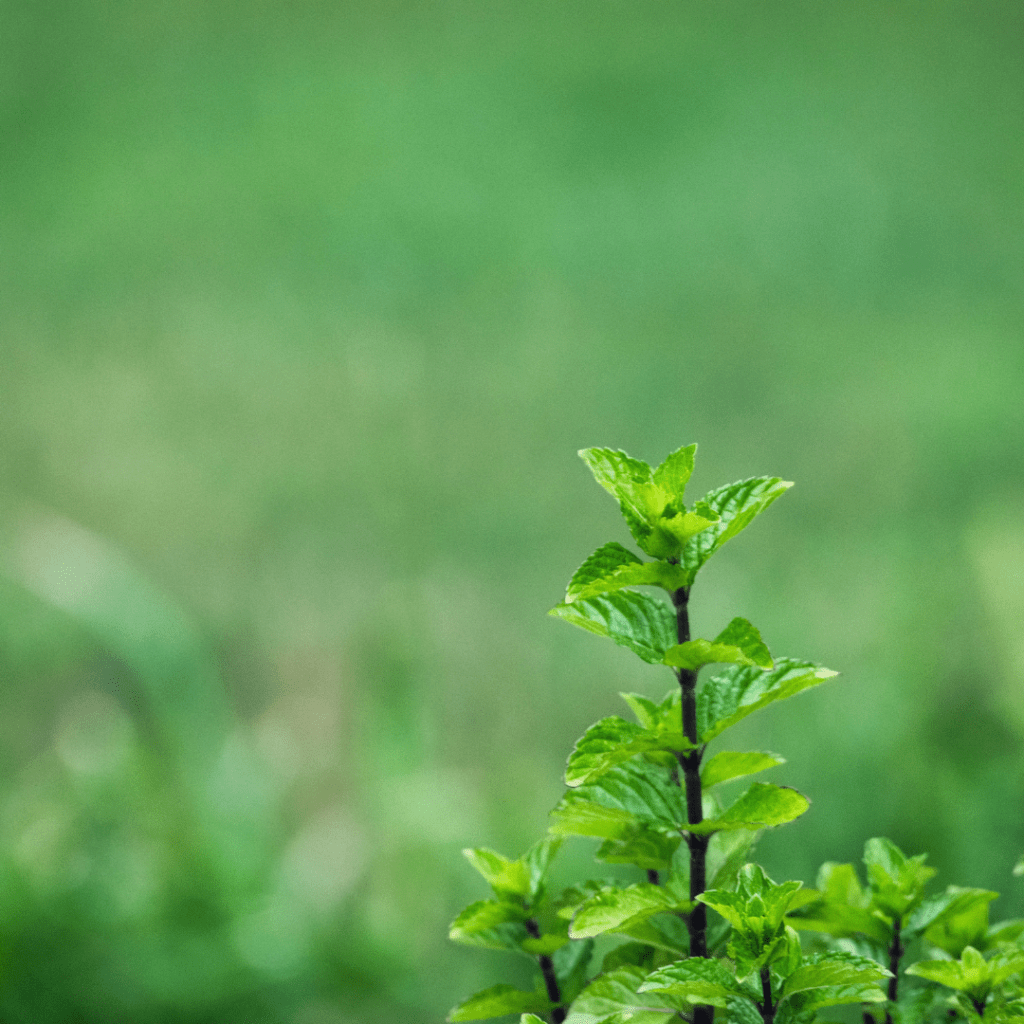
1. Peppermint and Spearmint Medicinal Herbs to Grow
Spearmint and peppermint, two popular members of the mint family, offer a plethora of benefits that go beyond their refreshing taste. Let’s start with oral health – these mints contain natural antiseptic properties that can combat bad breath and prevent dental issues like gum diseases.
Also, both spearmint and peppermint are known for their ability to soothe an upset stomach or relieve indigestion. They work by relaxing the muscles in your gastrointestinal tract, easing discomfort and bloating.
Just apply a bit of mint oil topically on your temples or inhale its aroma, and you may find relief from pesky headaches without resorting to medication. Overall, incorporating spearmint and peppermint into your daily routine can provide ample benefits for your oral health, digestion, and occasional headaches while adding a delightful kick to your snacks or beverages!
The menthol in peppermint and spearmint works as a decongestant and aids with colds and flu, sinus infections, headaches, muscle aches, and skin conditions. Peppermint and spearmint help cool down a scorching sunburn and calm motion sickness. Peppermint and spearmint are also useful for irritable bowel syndrome. The mint family is an anti-inflammatory agent.
Peppermint increases focus and brain memory. Therefore, it is helpful to place a few drops onto a cotton ball to sniff during a study session and to sniff one during the actual exam since the aroma will help trigger memory and bring to mind what you have studied. It is an effective mouthwash that kills germs and bacteria. These mints help lower blood pressure. They have antioxidant-related benefits.
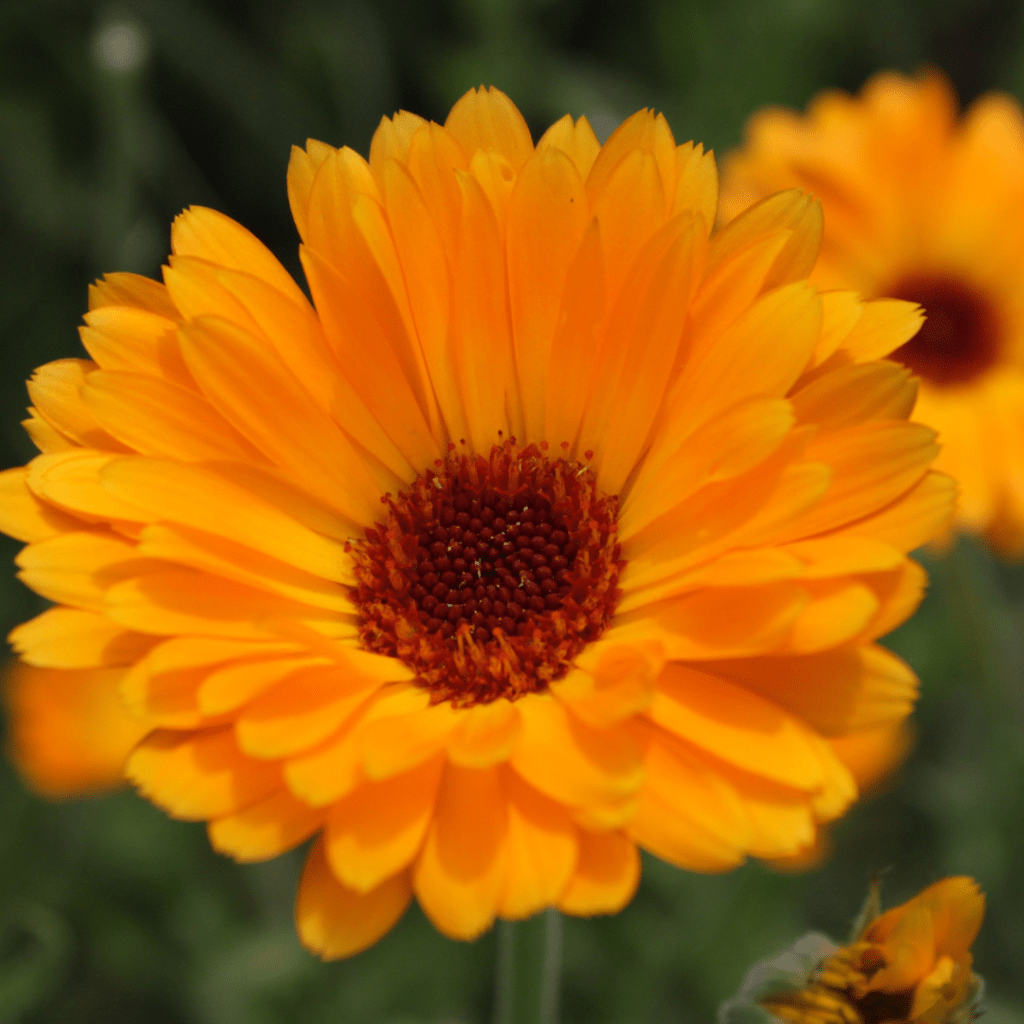
2. Calendula Medicinal Herb to Grow
Calendula, also known as pot marigold, is a vibrant and versatile medicinal herb that deserves a spot in every garden. This cheerful annual boasts bright orange and yellow petals, adding a burst of sunshine to your outdoor space. Beyond its aesthetic appeal, calendula is renowned for its remarkable healing properties.
Medicinal Benefits
Skin Care: Calendula is a powerhouse when it comes to soothing and healing skin conditions. Its anti-inflammatory and antimicrobial properties make it an excellent remedy for minor cuts, scrapes, and even more serious wounds. You can create a healing salve or ointment by infusing the petals in oil or make a soothing calendula tea for a relaxing bath.
Digestive Health: This versatile herb has been traditionally used to alleviate digestive issues such as indigestion, constipation, and even ulcers. Drinking calendula tea can help soothe the digestive tract and promote overall gut health.
Growing Calendula
Calendula is a low-maintenance herb that thrives in full sun and well-drained soil. Simply scatter the seeds directly in your garden bed or start them indoors for an earlier bloom. Once established, these hardy plants will bloom continuously throughout the growing season, providing you with a steady supply of vibrant petals for your medicinal needs.
Incorporate calendula into your garden not only for its healing properties, but also for its ability to attract beneficial pollinators like bees and butterflies. With its beauty and versatility, this medicinal herb is a true gem for any gardener seeking a natural remedy for a variety of ailments.
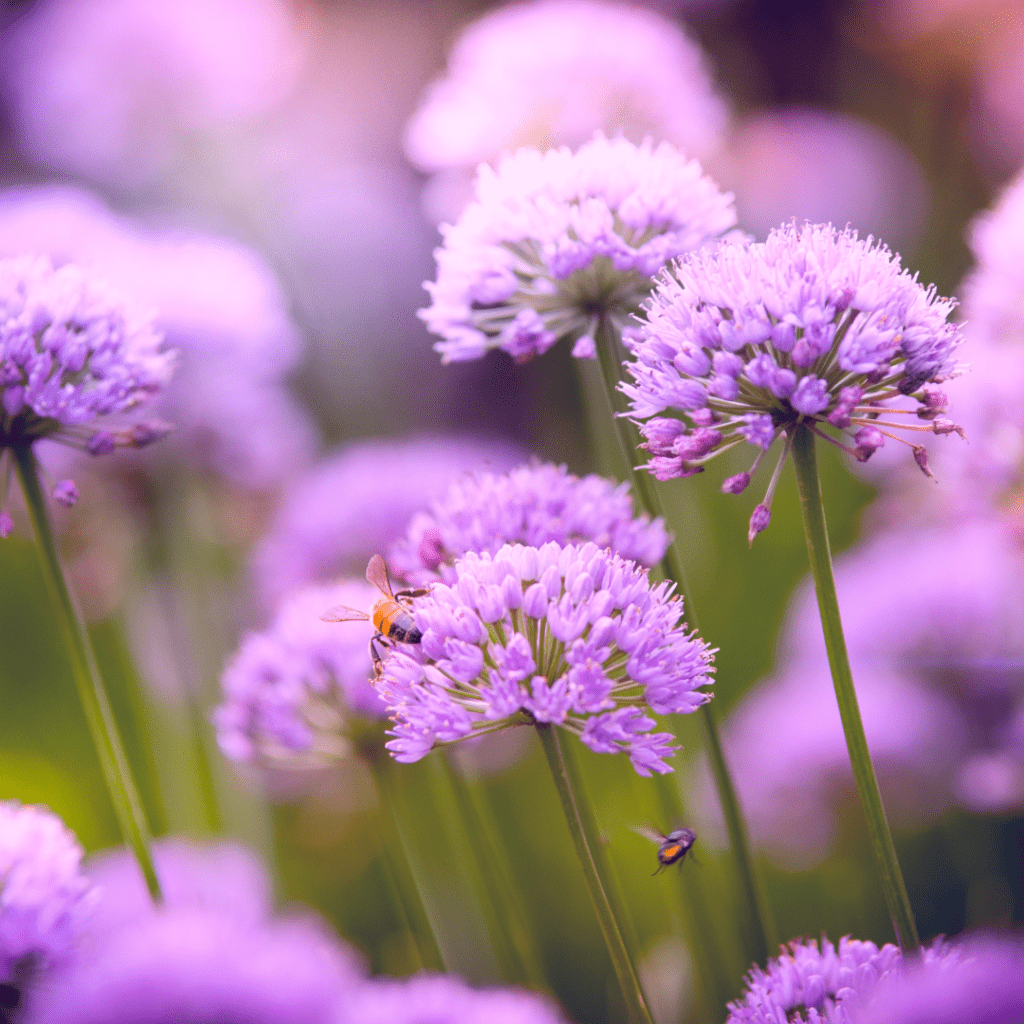
3. Bee Balm Medicinal Herb
Bee balm, also known as Monarda, is a versatile and attractive medicinal herb that deserves a spot in every garden. This perennial plant not only adds a pop of vibrant color with its striking red, pink, or purple flowers, but it also offers a wealth of medicinal benefits.
A Soothing Herbal Remedy
Bee balm has been used for centuries in traditional medicine to treat a variety of ailments. Its leaves contain thymol, a potent antiseptic and antifungal compound, making it an excellent remedy for respiratory issues such as coughs, colds, and bronchitis. You can brew a soothing tea from the dried leaves or use the fresh leaves to make a salve for topical application.
“Bee balm’s gentle yet effective properties make it a go-to remedy for sore throats and respiratory infections.” – The Off Grid Barefoot Girl
A Versatile Culinary Companion
Beyond its medicinal uses, bee balm is a delightful addition to the kitchen. Its leaves and flowers have a unique, minty-citrusy flavor that pairs beautifully with various dishes. You can use them to infuse vinegar, make herbal butter, or even candied flowers for a delightful garnish on desserts.
Easy to Grow and Maintain
One of the best things about bee balm is its low-maintenance nature. This hardy plant thrives in full sun to partial shade and prefers well-draining soil. It’s also drought-tolerant once established, making it an excellent choice for those looking to conserve water. Plus, its beautiful blooms attract pollinators like bees and butterflies, creating a vibrant and buzzing garden ecosystem.
Bee balm is a true gem in the medicinal herb world, offering a harmonious blend of healing properties, culinary delight, and natural beauty. With its easy-care requirements and versatile uses, it’s a must-have for any herb garden, ensuring a steady supply of this remarkable plant for all your medicinal and culinary needs.
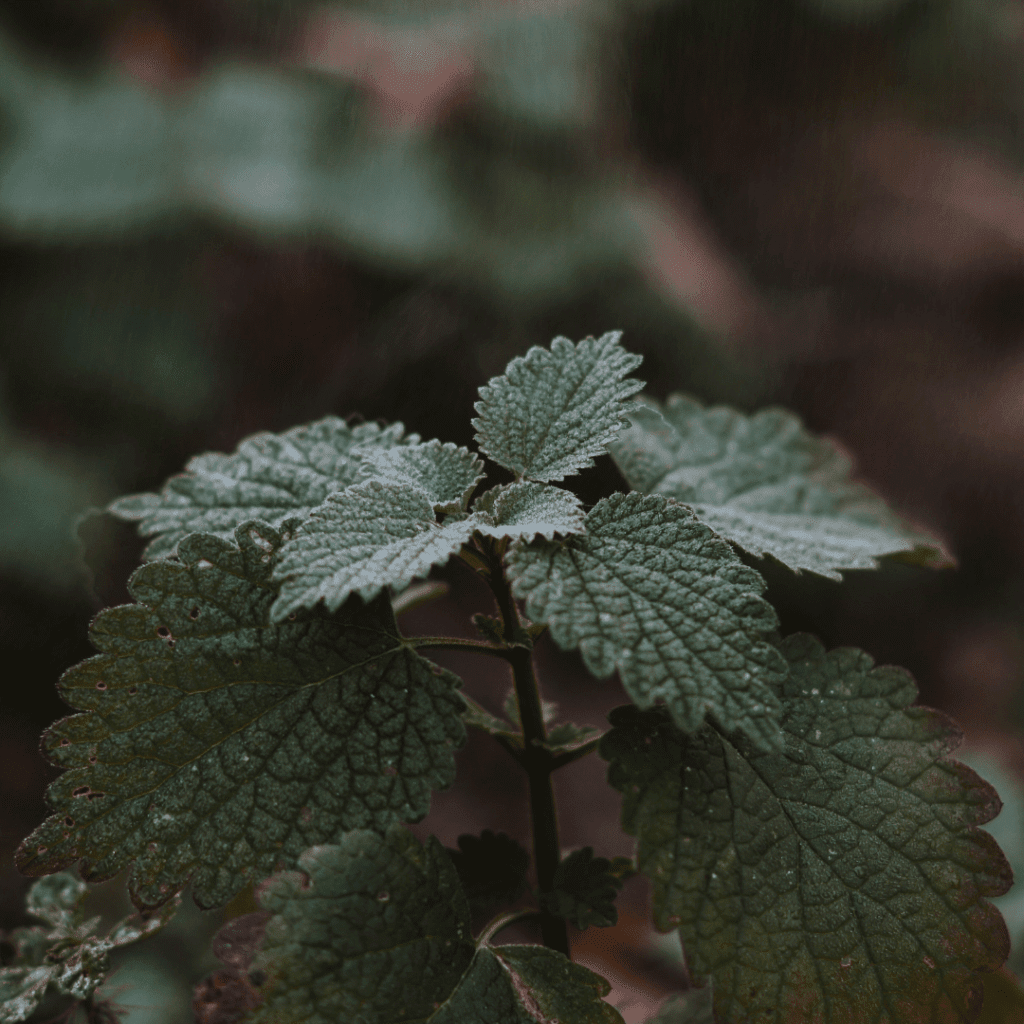
4. Lemon Balm Medicinal Herb
Lemon balm is a fragrant herb that offers a wide range of medicinal benefits. This versatile plant is easy to grow and can be a valuable addition to your garden.
Soothing Properties
Lemon balm is known for its calming and soothing properties. It has been traditionally used to alleviate stress, and anxiety, and promote better sleep. The herb’s gentle aroma can help create a relaxing atmosphere, making it a great choice for herbal teas or aromatherapy.
Digestive Aid
This herb can also be beneficial for digestive issues. It may help:
- Reduce bloating and gas.
- Soothe an upset stomach.
- Ease indigestion and nausea.
Immune Support
Lemon balm is rich in antioxidants and has antimicrobial properties, which can help support a healthy immune system. Including it in your diet may help your body fight off infections and illnesses more effectively.
Growing Tips
Lemon balm is a hardy perennial that thrives in full sun or partial shade. It prefers well-drained soil and can be grown in pots or directly in the ground. With minimal care, this herb will reward you with an abundant harvest throughout the growing season.
Remember, when incorporating any new herb into your routine, it’s always best to consult with a healthcare professional, especially if you have any underlying health conditions or are taking medications. Lemon balm is a versatile and beneficial herb that can be a valuable addition to your home garden and natural medicine cabinet.
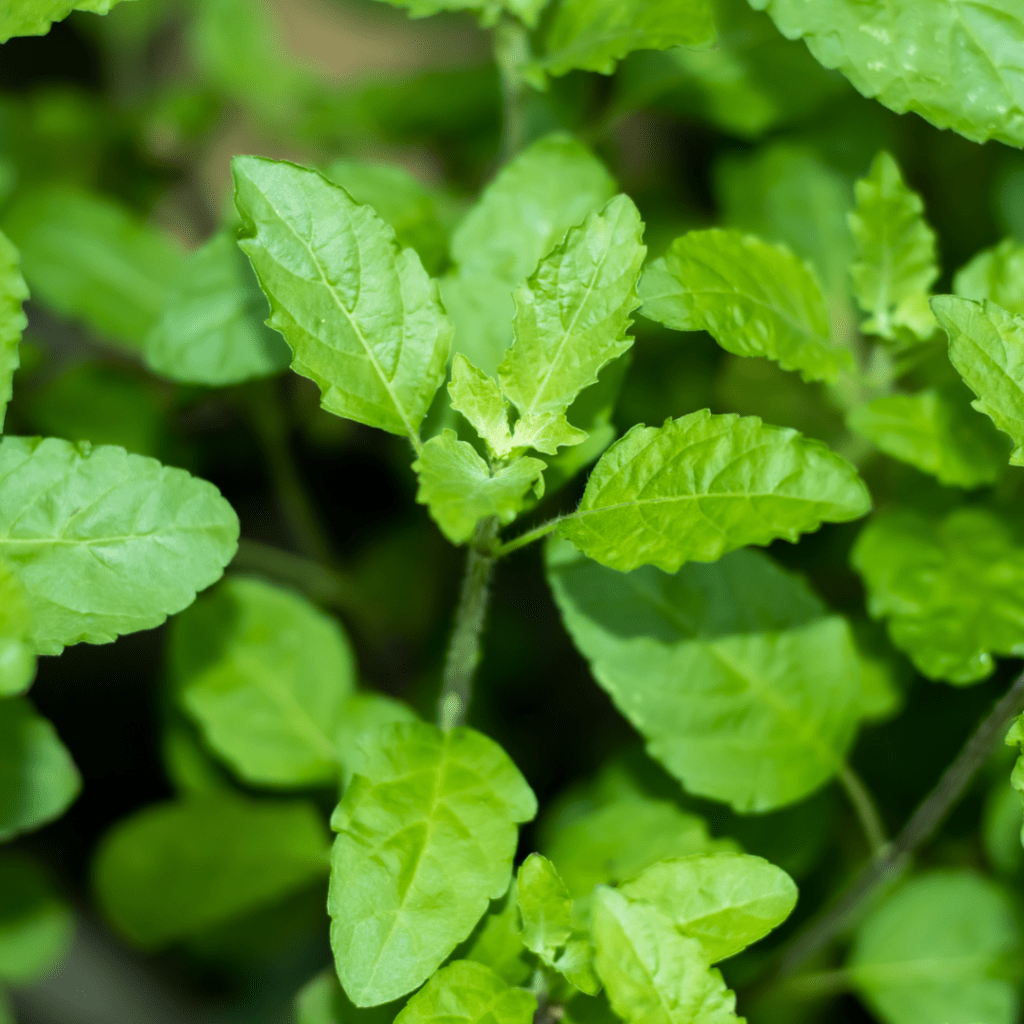
5. Holy Basil/Tulsi Medicinal Herb to Grow
Tulsi, also known as Holy Basil, is a revered medicinal herb in Ayurvedic medicine. This versatile plant offers a wealth of health benefits and is an excellent addition to any garden. Here’s why you should consider growing Tulsi:
A Powerful Adaptogen
Tulsi is considered an adaptogen, meaning it helps the body adapt to stress. Its unique combination of phytochemicals, including eugenol, carvacrol, and ursolic acid, supports the body’s natural defense mechanisms against various stressors.
Immune System Booster
Rich in antioxidants and antimicrobial properties, Tulsi can help strengthen the immune system. Regular consumption of Tulsi tea or supplements may help prevent common illnesses and support overall well-being.
Respiratory Health
Tulsi has been traditionally used to alleviate respiratory issues, such as bronchitis, asthma, and coughs. Its anti-inflammatory and expectorant properties can provide relief from respiratory discomfort.
Easy to Grow
Tulsi is a low-maintenance herb that thrives in warm climates and well-drained soil. It can be grown in containers or garden beds, making it accessible to gardeners with limited space.
Growing your own Tulsi not only provides you with a fresh supply of this powerful herb, but also allows you to connect with its rich cultural and medicinal heritage. Incorporate Tulsi into your daily routines, whether by brewing a soothing tea or adding its aromatic leaves to your favorite dishes.

6. Echinacea Medicinal Herb
Echinacea, also known as the purple coneflower, is a beloved medicinal herb that has long been revered for its immune-boosting properties. This vibrant wildflower native to North America is a must-have in any herb garden, not only for its striking beauty, but also for its remarkable health benefits.
The Immune-Boosting Powerhouse
Echinacea is best known for its ability to support the immune system and help fight off colds, flu, and other respiratory infections. Its active compounds, including alkylamides and polysaccharides, are believed to stimulate the production of white blood cells, which are the body’s natural defense against pathogens.
Versatile Medicinal Uses
While Echinacea excels in boosting immunity, its medicinal properties extend far beyond that. This versatile herb has also been used traditionally to:
- Alleviate sore throats and respiratory issues.
- Promote wound healing and reduce inflammation.
- Soothe skin conditions like eczema and psoriasis.
- Relieve anxiety and improve overall well-being.
Easy to Grow and Maintain
One of the most appealing aspects of Echinacea is its ease of cultivation. It thrives in well-drained soil and full sun, making it a fantastic choice for both novice and experienced gardeners. Once established, these hardy perennials require minimal maintenance, rewarding you with an abundance of beautiful blooms and a steady supply of medicinal herbs for years to come.
Incorporating Echinacea into your garden is a simple yet powerful way to embrace natural remedies and support your overall health and well-being. With its vibrant hues and incredible medicinal benefits, this versatile herb is a true gem that deserves a prominent place in every herbal sanctuary.
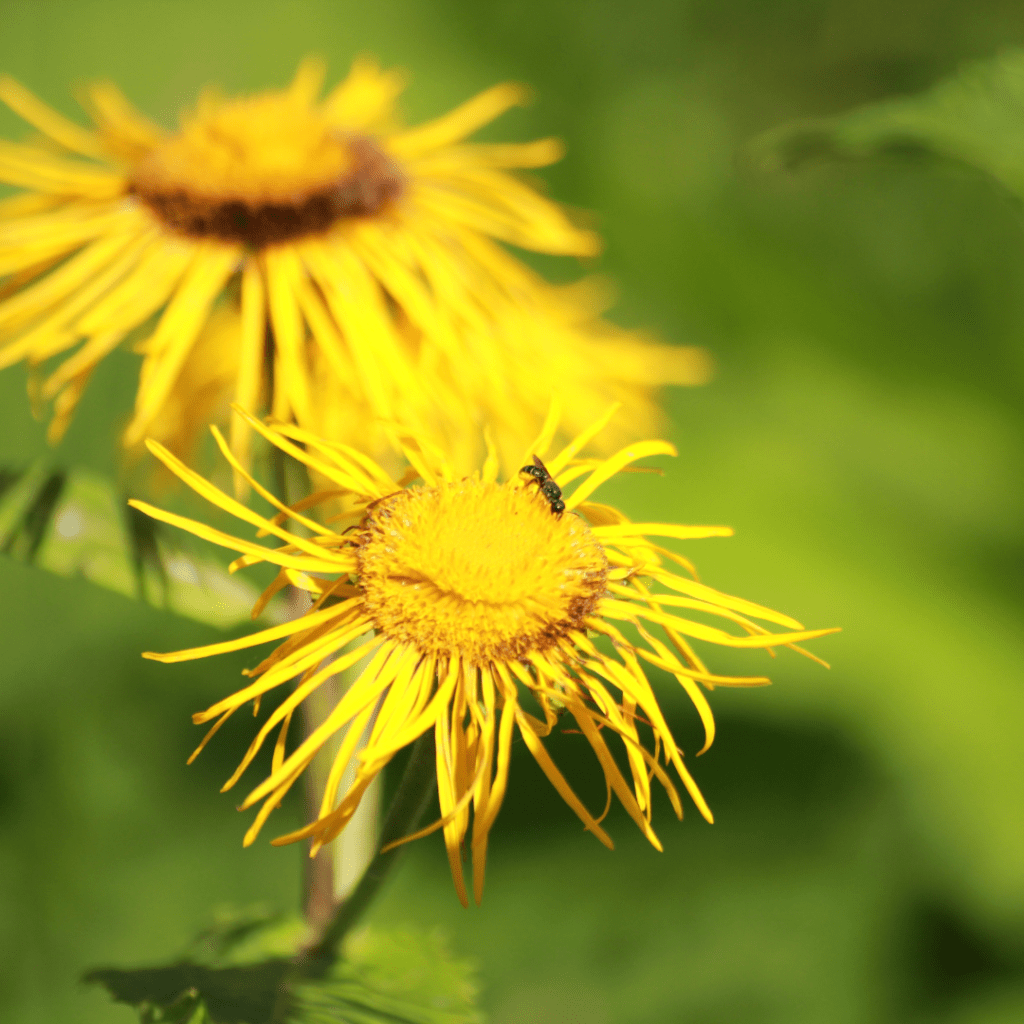
7. Elecampane Medicinal Herb to Grow
Elecampane, also known as Inula helenium, is a versatile medicinal herb that has been used for centuries in traditional medicine. This hardy perennial plant is easy to grow, making it an excellent addition to any medicinal garden.
A Powerful Respiratory Aid
Elecampane is particularly renowned for its ability to support respiratory health. Its roots contain compounds that act as expectorants, helping to loosen and expel mucus from the lungs and bronchial tubes. This makes it a valuable ally for those suffering from coughs, bronchitis, and other respiratory issues.
Soothing Digestive Support
Beyond its respiratory benefits, elecampane is also known for its digestive properties. Its roots can help to calm an upset stomach, relieve indigestion, and improve overall digestive function. This herb is often used in traditional remedies for bloating, gas, and other gastrointestinal discomforts.
Easy to Grow and Harvest
One of the best things about elecampane is its ease of cultivation. It thrives in full sun to partial shade and prefers well-drained, nutrient-rich soil. Once established, this hardy plant requires minimal maintenance, making it an excellent choice for both novice and experienced gardeners.
To harvest the medicinal roots, simply dig up the plant in the fall after the leaves have died back. The roots can be dried and stored for later use in tinctures, teas, or other herbal preparations.
Whether you’re looking to support respiratory health, promote digestive wellness, or simply add a versatile medicinal herb to your garden, elecampane is an excellent choice. With its rich history of use and ease of cultivation, it’s a valuable addition to any medicinal herb garden.
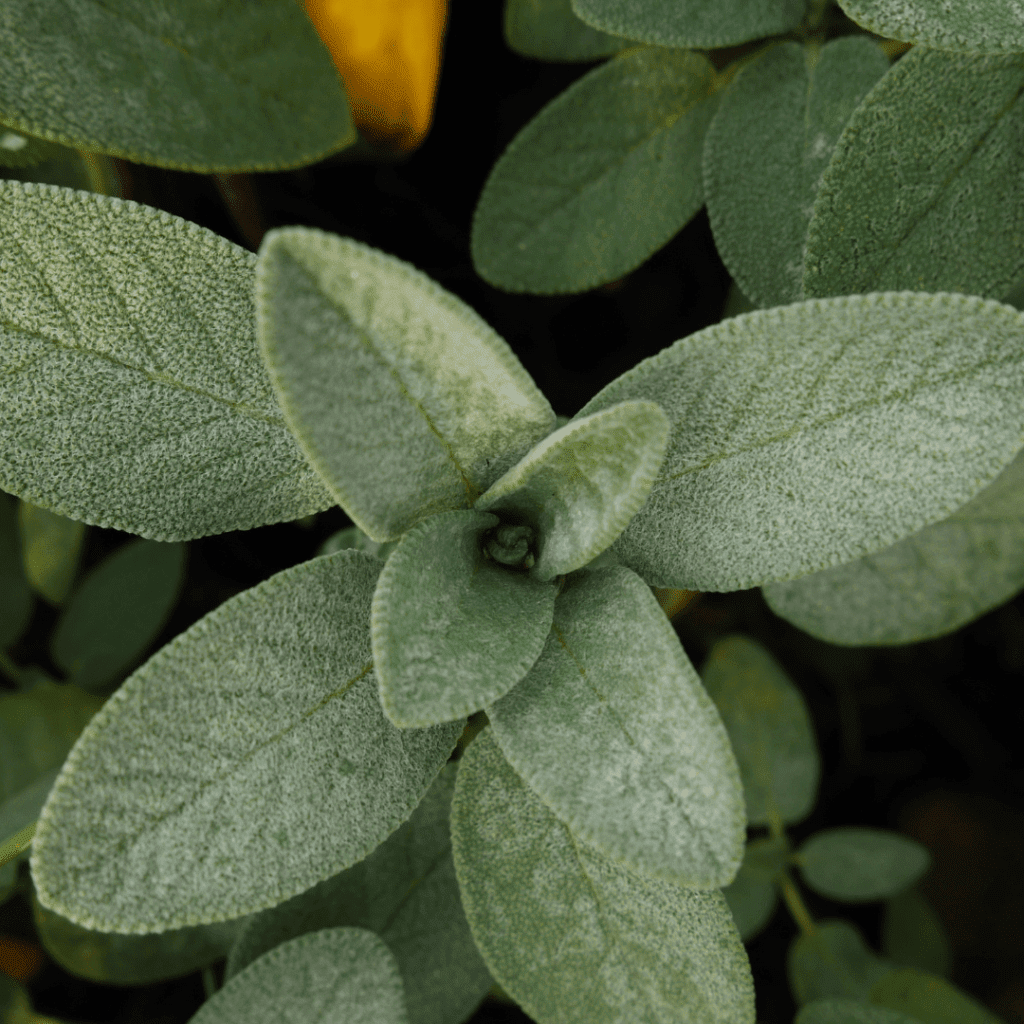
8. Sage Medicinal Herb
Sage is a versatile herb that has been used for centuries in traditional medicine and culinary applications. Here’s what you need to know about growing and using this medicinal herb:
History and Uses
Sage (Salvia officinalis) is a perennial evergreen shrub native to the Mediterranean region. It has a storied history of use in various cultures, including:
- Ancient Egyptians used sage for fertility rituals and as a sacred ceremonial herb.
- Greeks and Romans valued sage for its healing properties and believed it could extend life.
- European herbalists relied on sage for treating digestive issues, memory problems, and excessive sweating.
Today, sage is most commonly used as a culinary herb, lending its earthy, slightly peppery flavor to dishes like stuffing, sausages, and marinades. However, it also has medicinal applications, including:
- Antimicrobial properties: Studies suggest sage may have antibacterial and antifungal effects, making it useful for treating infections.
- Cognitive support: Some research indicates that sage may improve memory and cognitive function, potentially benefiting those with Alzheimer’s disease.
- Menopausal relief: Sage is sometimes used to alleviate hot flashes and other menopausal symptoms due to its estrogen-like effects.
Growing Sage at Home
Sage is relatively easy to grow and thrives in well-drained soil and full sun. Here are some tips for cultivating this herb in your garden:
- Start with nursery-grown plants or seeds, spacing them 18-24 inches apart.
- Prune regularly to encourage bushier growth and prevent flowering, which can make the leaves taste bitter.
- Harvest leaves as needed, taking care not to remove more than one-third of the plant at a time.
- Sage is drought-tolerant, but benefits from occasional deep watering during dry spells.
With its rich history, culinary versatility, and potential health benefits, sage is a valuable addition to any medicinal herb garden. Grow your own and enjoy its distinctive aroma and flavor while reaping the plant’s many benefits.
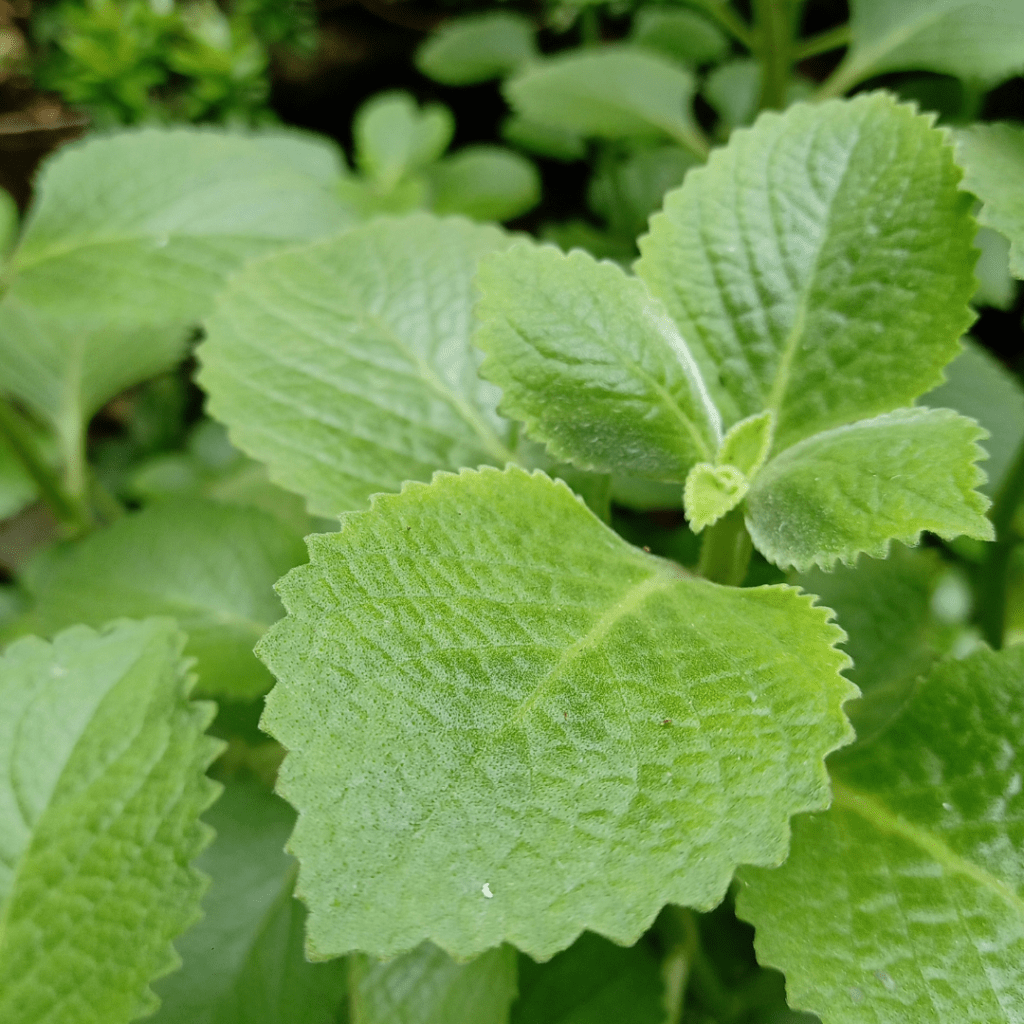
9. Oregano Medicinal Herb to Grow
Oregano is a versatile medicinal herb that deserves a spot in every garden. Known for its warm, earthy flavor in Mediterranean cuisine, this hardy perennial also boasts an impressive array of health benefits.
A Powerhouse of Antioxidants
Oregano is rich in antioxidants, particularly rosmarinic acid and thymol. These compounds help neutralize harmful free radicals, reducing oxidative stress and protecting your cells from damage. By incorporating fresh oregano into your diet, you can boost your body’s natural defense system.
Nature’s Antibiotic
Studies have shown that oregano possesses potent antimicrobial properties, making it a natural ally in fighting bacterial and fungal infections. Its essential oils, like carvacrol and thymol, can inhibit the growth of various pathogens, including those resistant to antibiotics.
Digestive Aid
Oregano can be a soothing companion for your digestive system. Its anti-inflammatory properties help alleviate discomfort associated with conditions like bloating, gas, and indigestion. Additionally, oregano may stimulate the production of digestive enzymes, promoting better nutrient absorption.
Growing oregano in your garden is a breeze. This low-maintenance herb thrives in well-drained soil and full sun. Harvest the leaves regularly to encourage bushier growth, and enjoy its health benefits in your favorite dishes or herbal remedies.
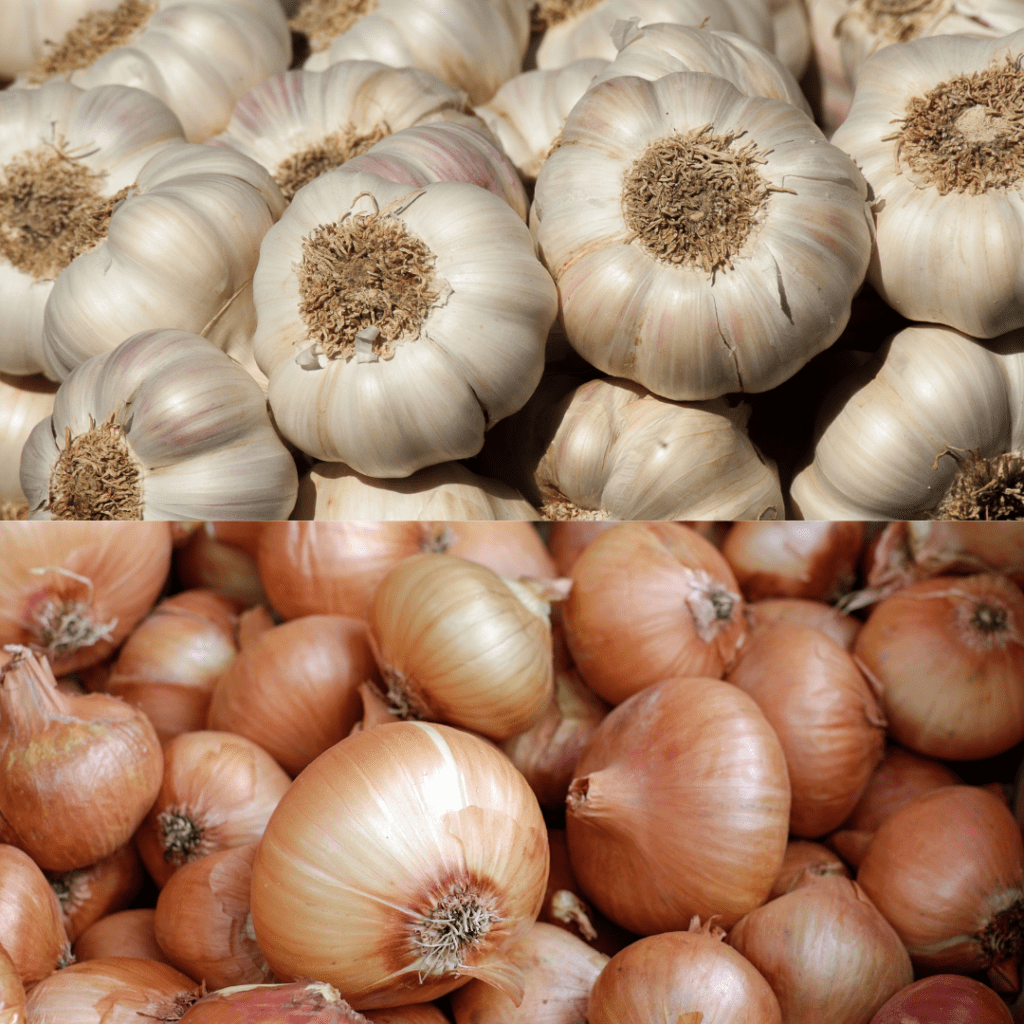
10. Garlic and Onions Medicinal Herbs
Garlic and onions are two of the most versatile and widely used medicinal herbs. These pungent members of the allium family have been valued for their culinary and therapeutic properties for centuries.
Garlic: A Natural Antibiotic and More
Garlic is a powerhouse of medicinal benefits. It contains allicin, a sulfur compound that gives garlic its distinctive aroma and acts as a natural antibiotic, antifungal, and antiviral agent. Consuming garlic can help boost your immune system, lower blood pressure, and even reduce cholesterol levels.
Onions: More Than Just a Tear-Jerker
While onions are famous for making us tear up during meal prep, they offer a wealth of health advantages. Onions are rich in quercetin, a potent antioxidant that helps fight inflammation and may even have anti-cancer properties. They also contain vitamin C, fiber, and other beneficial compounds that support overall well-being.
Both garlic and onions are easy to grow in your garden and can be incorporated into various dishes, from savory meals to herbal remedies. By growing these versatile herbs, you’ll have a readily available source of natural medicine and flavor boosters right at your fingertips.
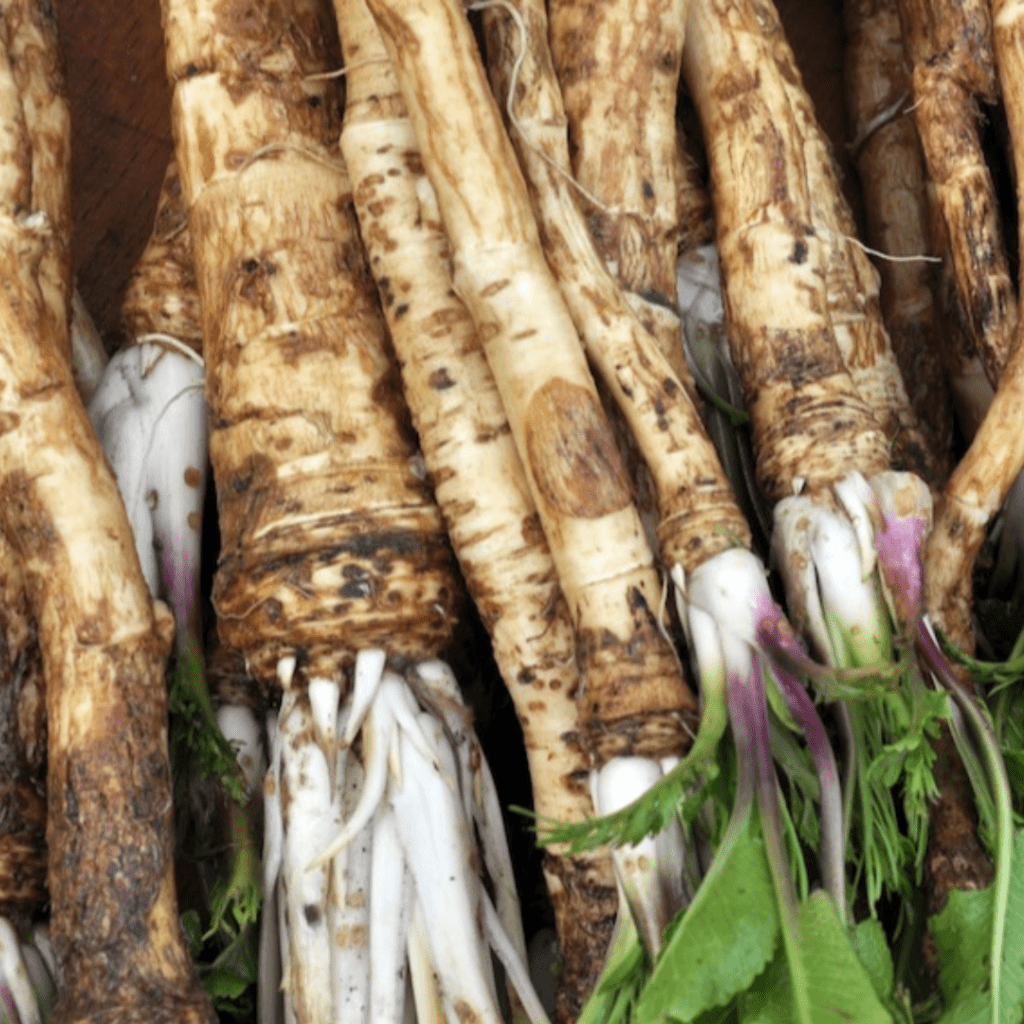
11. Horseradish Medicinal Herb to Grow
Horseradish is a hardy perennial herb that’s easy to grow and packs a punch in both flavor and medicinal benefits. This root vegetable has been used for centuries in traditional medicine for its potent antimicrobial, anti-inflammatory, and antioxidant properties.
Medicinal Uses
Respiratory Health: Horseradish has been traditionally used to relieve respiratory issues like bronchitis, coughs, and sinus congestion. Its pungent compounds help clear mucus and open airways.
Digestive Aid: The isothiocyanates in horseradish stimulate digestive enzymes, promoting better digestion and relieving bloating and gas.
Immune Booster: Rich in vitamin C, horseradish can help strengthen the immune system and ward off infections.
Growing Horseradish
Horseradish thrives in cool climates and prefers well-drained, fertile soil. Here’s how to grow it:
- Plant root cuttings or crowns in early spring, spacing them about 2 feet apart.
- Keep the soil consistently moist, but not waterlogged.
- Mulch around the plants to retain moisture and suppress weeds.
- Harvest the pungent roots in late fall or early spring.
With its versatile culinary and medicinal uses, horseradish is a must-have in any herb garden. Add a kick of flavor and health benefits to your meals with this hardy, low-maintenance crop.
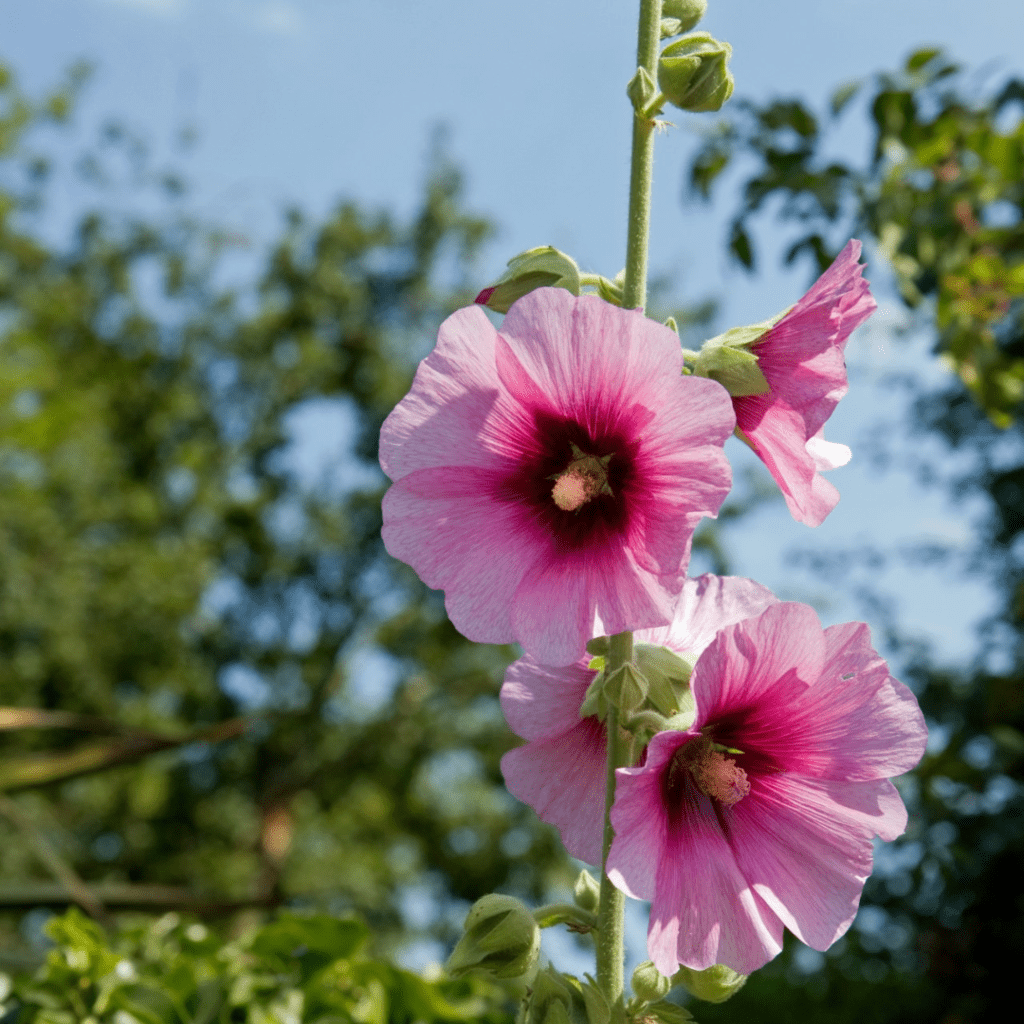
12. Marshmallow Root and Hollyhocks Medicinal Herbs
Marshmallow root and hollyhocks are two versatile medicinal herbs that deserve a spot in your garden. Both plants offer a range of health benefits and are relatively easy to cultivate.
Marshmallow Root
Marshmallow root (Althaea officinalis) has been used for centuries in traditional medicine for its soothing properties. The root contains a mucilage that can:
- Coat and protect inflamed tissues in the digestive and respiratory tracts.
- Relieve coughs, sore throats, and digestive issues like constipation.
- Promote healing of minor wounds and skin irritations when applied topically.
To use marshmallow root, you can make tea by steeping the dried root in hot water or use it to make a soothing syrup.
Hollyhocks
Hollyhocks (Alcea rosea) are not only beautiful garden ornamentals, but also have medicinal uses. The flowers and roots can be utilized:
- As a demulcent (soothing agent) for irritated mucous membranes.
- To reduce inflammation and pain.
- For treating respiratory issues like bronchitis and sore throats.
You can make a tea from the dried flowers or roots, or use a tincture for external application on skin irritations or minor wounds.
Both marshmallow roots and hollyhocks are easy to grow and maintain in your garden. They prefer well-draining soil and full sun exposure. By cultivating these versatile herbs, you’ll have a readily available source of natural remedies for various ailments right at your doorstep.
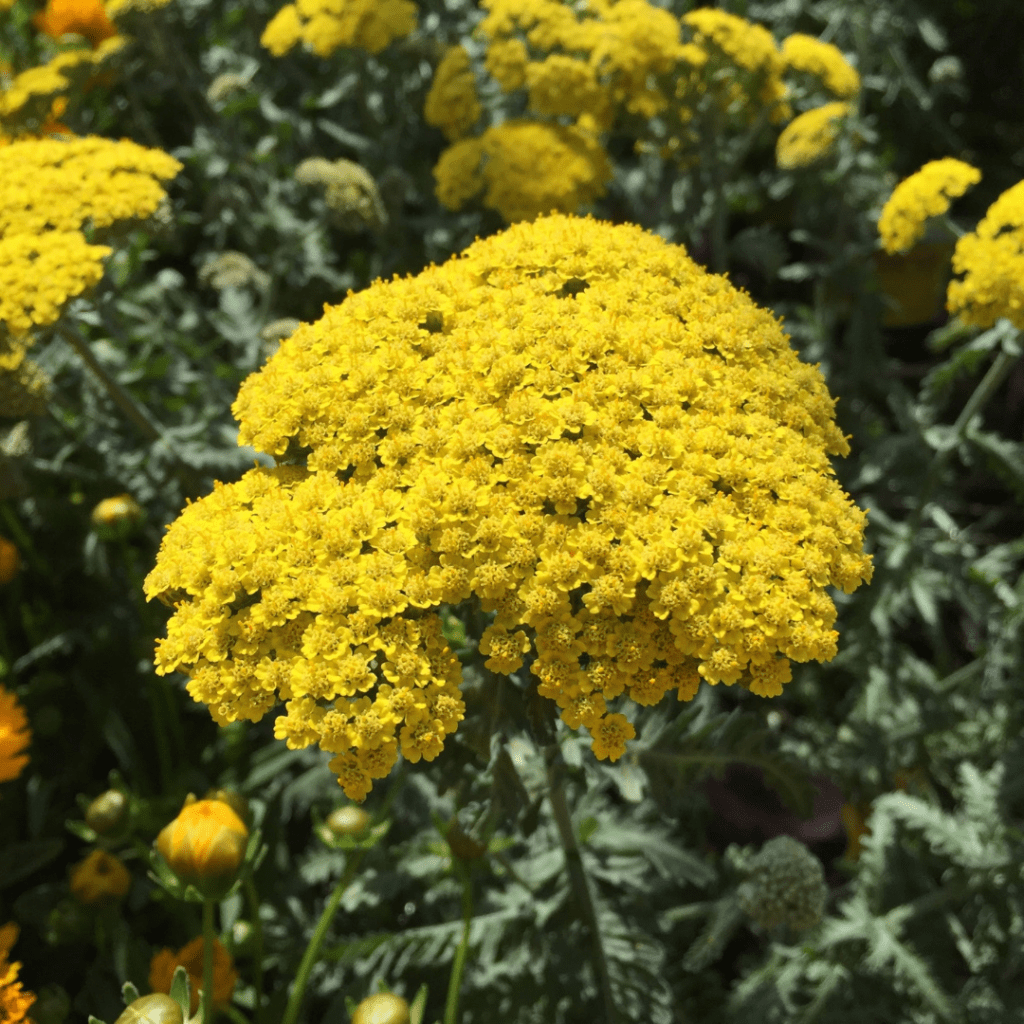
13. Yarrow Medicinal Herb to Grow
Yarrow (Achillea millefolium) is a versatile medicinal herb that should be a staple in any garden. This hardy perennial is not only easy to grow, but also offers a wealth of health benefits.
A Potent Healer
Yarrow has been used for centuries to treat a wide range of ailments. Its leaves and flowers are rich in compounds like:
- Flavonoids (anti-inflammatory).
- Alkaloids (pain-relieving).
- Terpenes (antimicrobial).
This makes Yarrow a powerful ally for:
- Stopping bleeding (hence its nickname “soldier’s woundwort”).
- Relieving menstrual cramps.
- Treating colds and fevers.
- Soothing toothaches and sore throats.
Growing and Harvesting
Yarrow thrives in well-drained soil and full sun. It’s drought-tolerant and resistant to deer and rabbits, making it a low-maintenance choice. Here are some tips for growing this versatile herb:
- Sow seeds directly in the garden after the last frost.
- Space plants 12-18 inches apart.
- Harvest leaves and flowers throughout the growing season.
- Cut stems close to the ground for drying or fresh use.
With its many uses and easy care, yarrow is a must-have for any medicinal garden.
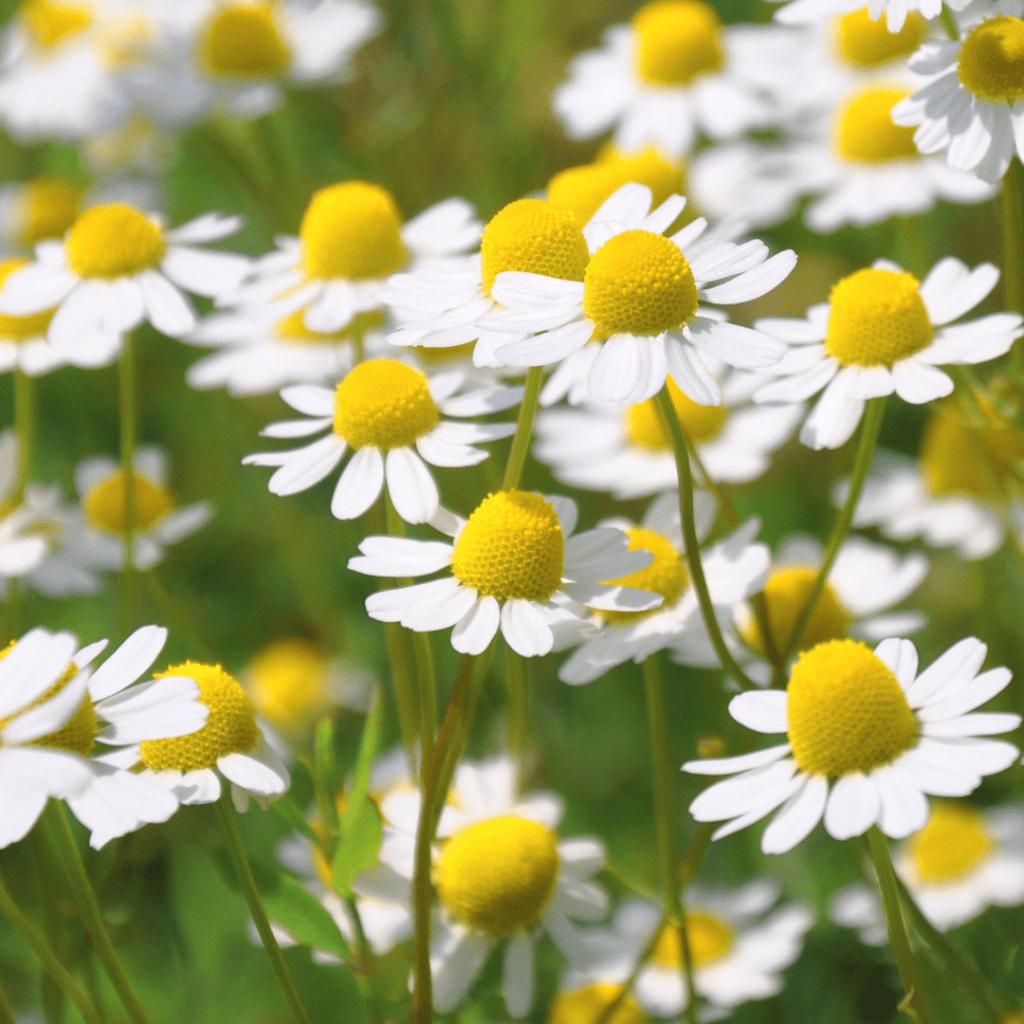
14. Chamomile Medicinal Herb
Chamomile is a versatile and soothing herb that has been used for centuries in traditional medicine. This daisy-like plant is not only beautiful to look at, but also offers a range of health benefits, making it a must-have in your medicinal garden.
A Calming Companion
Chamomile is well-known for its calming properties, making it an excellent natural remedy for relieving stress and promoting relaxation. Its gentle aroma and flavor can help you unwind after a long day, allowing you to find inner peace and tranquility.
Digestive Support
This herb is also a friend to your digestive system. Its anti-inflammatory properties can help soothe an upset stomach, reduce bloating, and alleviate other digestive discomforts. Whether you brew a soothing chamomile tea or incorporate the herb into your meals, it can provide much-needed relief for your gut.
Skin Soother
Chamomile’s healing properties extend beyond internal use. Its anti-inflammatory and antimicrobial properties make it an ideal natural remedy for various skin conditions, such as eczema, rashes, and minor burns. You can create a soothing chamomile compress or add it to your homemade skincare products for a gentle, nourishing touch.
With its versatility and gentle nature, chamomile is a valuable addition to any medicinal herb garden. Its calming presence and numerous health benefits make it a reliable companion for overall well-being.
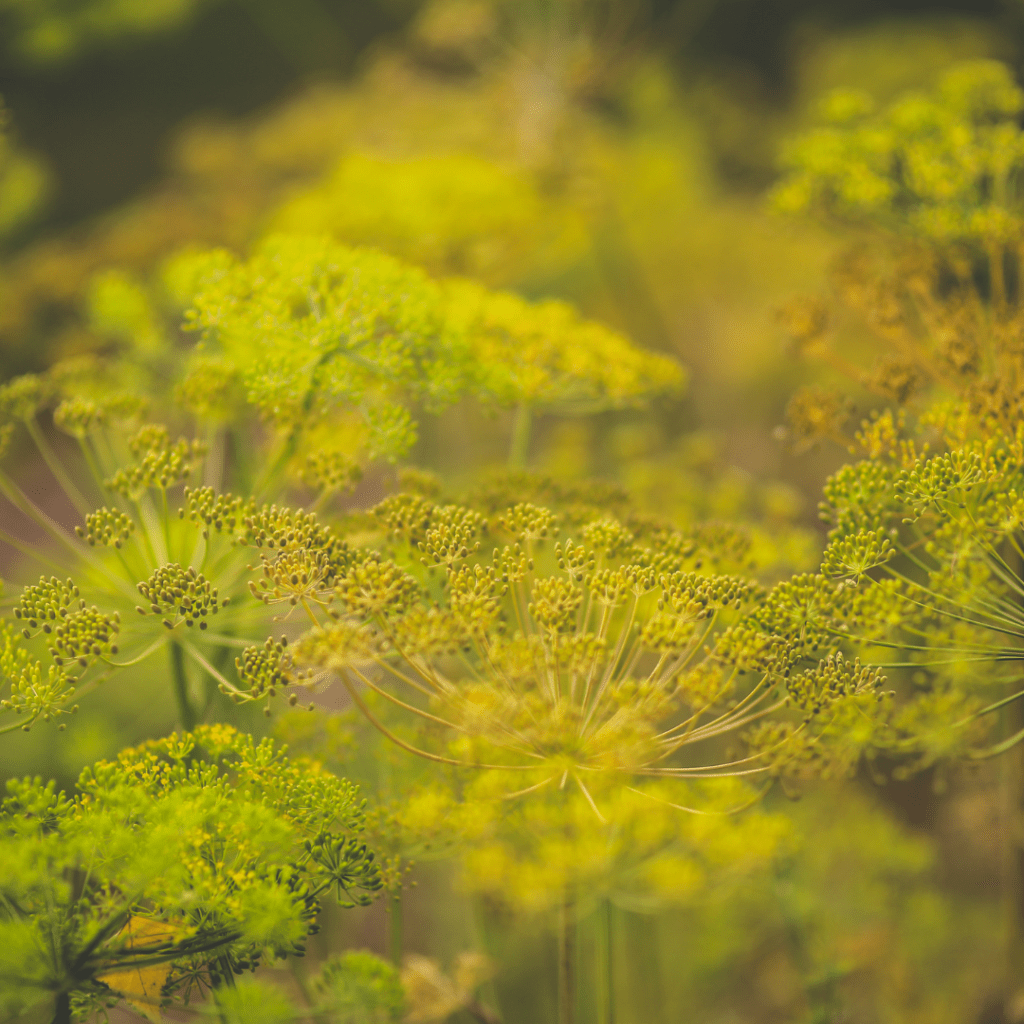
15. Dill Medicinal Herb to Grow
Dill is a fragrant herb with feathery leaves and yellow flowers that are commonly used in cooking. However, this unassuming plant also packs a punch when it comes to medicinal benefits. Here’s why you should consider growing dill in your garden:
Digestive Benefits
Dill is a great herb for promoting healthy digestion. Its compounds can help relieve gas, bloating, and indigestion. Chewing on a few dill seeds after a heavy meal can work wonders for your stomach.
Antimicrobial Properties
Studies have shown that dill contains compounds with antimicrobial and antioxidant properties. This means it can help fight off harmful bacteria and free radicals, promoting overall health and well-being.
Menstrual Relief
For women dealing with menstrual cramps and discomfort, dill can be a natural ally. Its anti-inflammatory properties may help alleviate menstrual pain and ease associated symptoms.
Growing dill is relatively easy, and it can thrive in both gardens and containers. With its culinary and medicinal uses, dill is a versatile herb that deserves a spot in your garden. Incorporate it into your meals, and teas, or even create homemade remedies for a natural boost to your health.
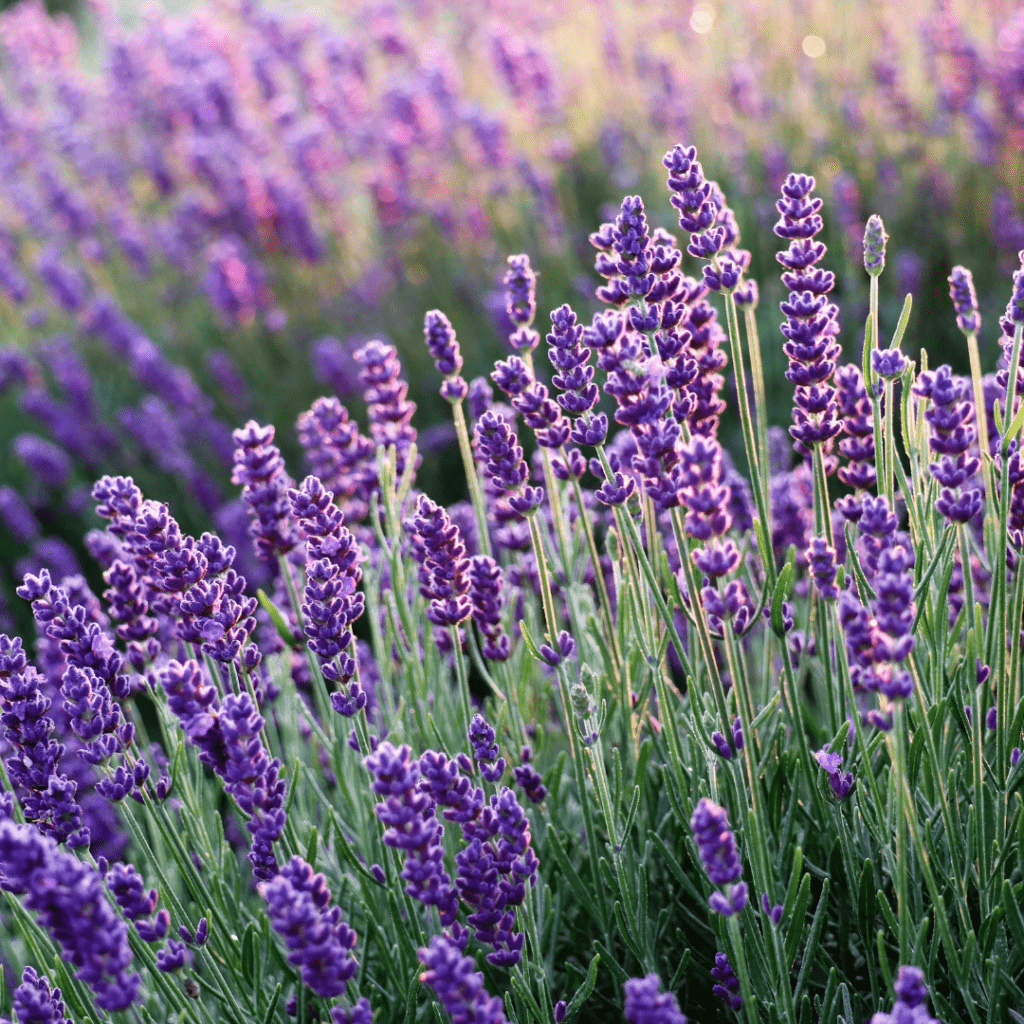
16. Lavender Medicinal Herb
Lavender is a versatile and fragrant herb that has been cherished for centuries for its medicinal properties. This beautiful plant with its striking purple flowers is not only a delight to the senses, but also a valuable addition to any garden or herbal medicine cabinet.
Healing Properties
Lavender is known for its calming and soothing effects on the mind and body. Its anti-inflammatory and antioxidant properties make it a natural remedy for:
- Reducing stress and anxiety.
- Improving sleep quality.
- Relieving headaches and migraines.
- Soothing minor burns and skin irritations.
Growing and Harvesting
This hardy herb thrives in sunny, well-drained areas and can tolerate drought conditions once established. Here are some tips for growing and harvesting lavender:
- Plant it in raised beds or containers to ensure proper drainage.
- Prune regularly to encourage bushier growth and more flower production.
- Harvest the flower spikes when about one-third of the flowers have opened.
- Dry the flowers and store them in airtight containers for later use.
Lavender is truly a gift from nature, offering both beauty and healing. Incorporate this versatile herb into your garden and daily routine to reap its numerous benefits.
Conclusion
Growing a medicinal herb garden is not only rewarding, but also a practical way to enhance your well-being and self-sufficiency. By cultivating these 16 powerful herbs, you’ll have a wealth of natural remedies at your fingertips, ready to address various ailments and promote overall health. From the versatile calendula and soothing chamomile to the immune-boosting echinacea and aromatic lavender, each plant offers unique therapeutic properties.
As you nurture your garden, remember that incorporating these herbs into your daily routine can be as simple as brewing a soothing tea, creating a homemade salve, or adding them to your favorite recipes. Embrace the joy of growing your own medicine and take pride in the knowledge that you’re fostering a connection with nature while taking control of your well-being.
Why not share your journey with others and inspire them to explore the fascinating world of medicinal herbs? Together, we can rediscover the healing power of plants and pave the way for a more sustainable, self-reliant future. The path to better health starts with a single seed, so what are you waiting for? Let’s get growing!
Resources: Here are some helpful resources for further information.
- Medicinal Herb Gardening for Beginners – By Chestnut School of Herbal Medicine
- Medicinal Herbs & Their Uses – By Homesteading Family
- Medicinal Herb Garden (Planning and Growing) – By Melissa K. Norris
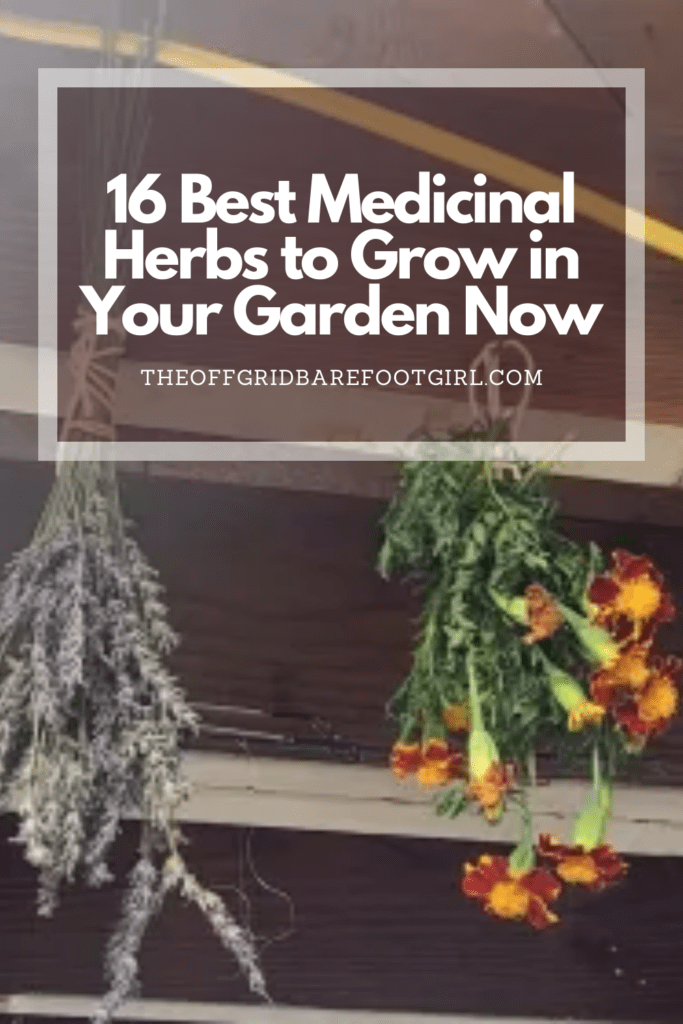
Frequently Asked Questions
1. What are the benefits of growing medicinal herbs in my garden?
Growing medicinal herbs allows you to have a fresh, natural supply of remedies for common ailments, promotes self-sufficiency, and enhances your garden with diverse plants that are often easy to grow and maintain.
2. Which medicinal herbs are the easiest to grow for beginners?
Herbs like mint, chamomile, lavender, and thyme are easy to grow and require minimal maintenance, making them perfect for beginners.
3. How do I use the medicinal herbs I grow?
Medicinal herbs can be used in various ways, including brewing teas, making tinctures, creating salves, or using them in culinary dishes for their health benefits.
4. Can I grow medicinal herbs indoors?
Yes, many medicinal herbs can be grown indoors in containers, provided they have adequate sunlight, water, and proper care. Herbs like basil, parsley, and aloe vera thrive well indoors.
Summary
I hope I have inspired you to plant your own medicinal herb garden and begin to reap the benefits of what medicinal herbs have to offer.
If you were encouraged by this post, I invite you to check out my FREE Printables Page for fun free printables, planners, and charts.
ENTER MY FREE Printables Page HERE
Here are some more of my gardening inspiration posts to check out!
8 Best Natural Pain Relievers For Survival Without Pharmaceuticals
Powerful Health Benefits of Garlic and Its Effects
Powerful Health Benefits of Holy Basil and Its Effects
16 Best Medicinal Herbs to Grow in Your Garden Now
Powerful Health Benefits of Spearmint and Its Effects
Powerful Health Benefits of Sage and Its Effects
Why I Built A Survival Garden in My Backyard
How to Grow A Foodscape Garden From Scratch
Best Survival Seed Vaults to Stockpile for a Crisis
Blessings,
The Off Grid Barefoot Girl

